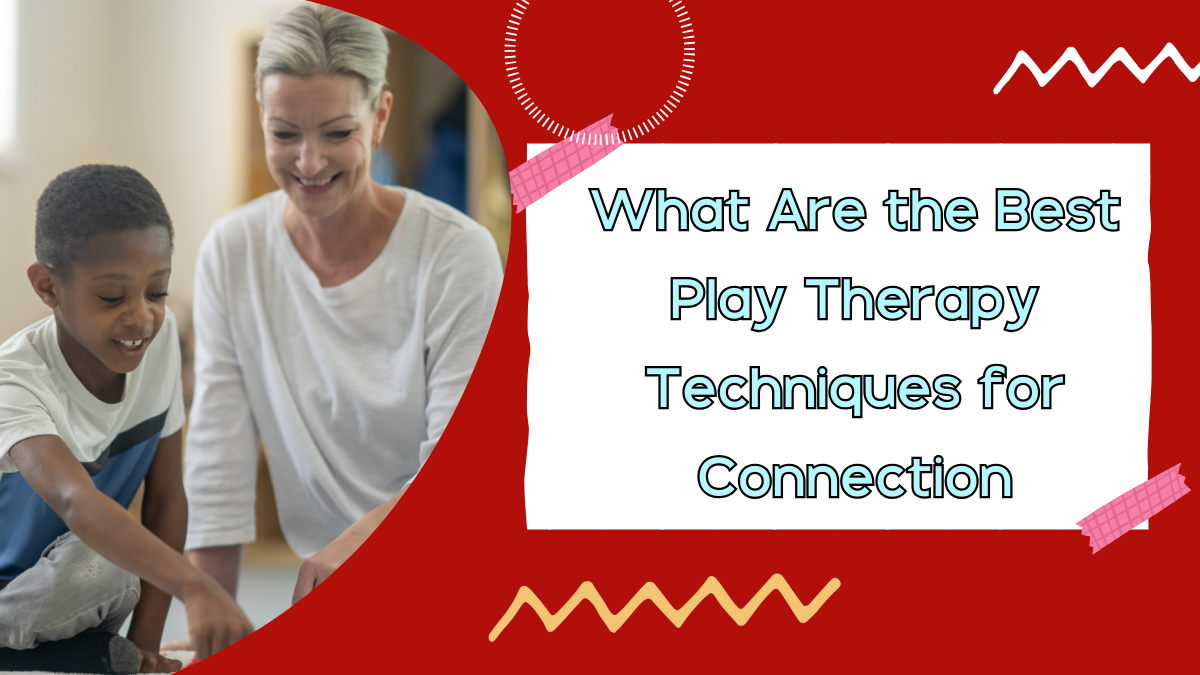What Are the Best Play Therapy Techniques for Connection

In this week's episode, we celebrate Valentine's Day with a special focus on play therapy activities. Typically, Valentine's Day is seen as a celebration of romantic love, but in the context of working with children and families, it's also a fantastic opportunity to build secure attachment, love, and connection within the family system.
While a strong marital or couples relationship is crucial for the stability of a family, today's discussion centers on the relationship between parents and children. By fostering secure attachments and connections, we can create a supportive and nurturing environment for kids. So let's dive into some creative activities that can help strengthen these bonds.
Foundational Concepts in Play Therapy
Before we jump into the activities, it's important to establish a solid foundation. This involves understanding key concepts such as case conceptualization, treatment planning, and the therapeutic powers of play. These elements are crucial in play therapy as they help differentiate it from merely using games and toys.
Case Conceptualization and Treatment Planning
Case conceptualization involves understanding the client's problems and why they are happening. It influences treatment planning, which outlines the steps you'll take to help your client overcome their issues. This foundational work is essential in ensuring that the activities you choose are effective and aligned with your therapeutic goals.
If you're interested in a deeper dive into these concepts, you might want to check out my previous episodes or my YouTube channel, where I have detailed discussions on these topics. For those who prefer a more structured learning experience, I offer online, self-paced courses that walk you through the steps of case conceptualization and treatment planning.
Activities to Foster Connection
1. Heart-Shaped Boxes
One fun and meaningful activity involves using heart-shaped boxes, which are plentiful around Valentine's Day. Instead of discarding those boxes once the chocolates are gone, repurpose them for a therapeutic activity. Kids can decorate the boxes and fill them with photos, mementos, or positive affirmations. This activity helps children express their feelings and create a tangible reminder of their connections.
2. The Invisible String
The book "The Invisible String" by Patrice Karst is a wonderful tool for discussing attachment and connection. It illustrates the concept that we are always connected to our loved ones, even when we are apart. After reading the book, you can engage children in activities like creating their own invisible strings with yarn or string, representing their connections to family members.
3. Family Heart Puzzle
For families dealing with separation or divorce, the "piece of my heart" activity can be very comforting. Create a large heart out of poster board and cut it into puzzle pieces. Each family member decorates a piece, and then they exchange pieces, symbolizing that they carry a piece of each other's hearts with them wherever they go. This activity reinforces the idea that family bonds remain strong despite physical distance.
Recap and Final Thoughts
To summarize, when planning play therapy activities, it's crucial to:
- Identify the Purpose: Ensure your activities align with your case conceptualization and treatment plan.
- Therapeutic Powers of Play: Choose activities that help clients access these powers, such as enhancing social relationships and fostering emotional wellness.
- Creative Activities: Use heart-shaped boxes, books like "The Invisible String," and family heart puzzles to foster connection and attachment.
These activities are not just fun; they are grounded in the principles of play therapy and designed to create meaningful, therapeutic experiences.
Further Learning
If you're interested in learning more about case conceptualization, treatment planning, and using therapeutic activities effectively, check out my courses. These self-paced, online courses provide a deep dive into essential play therapy skills, helping you become more confident and effective in your practice.
Categories: : Case Conceptualization, Play Therapy, Play Therapy Model, Podcast, treatmet plan
 Cathi Spooner
Cathi Spooner 
